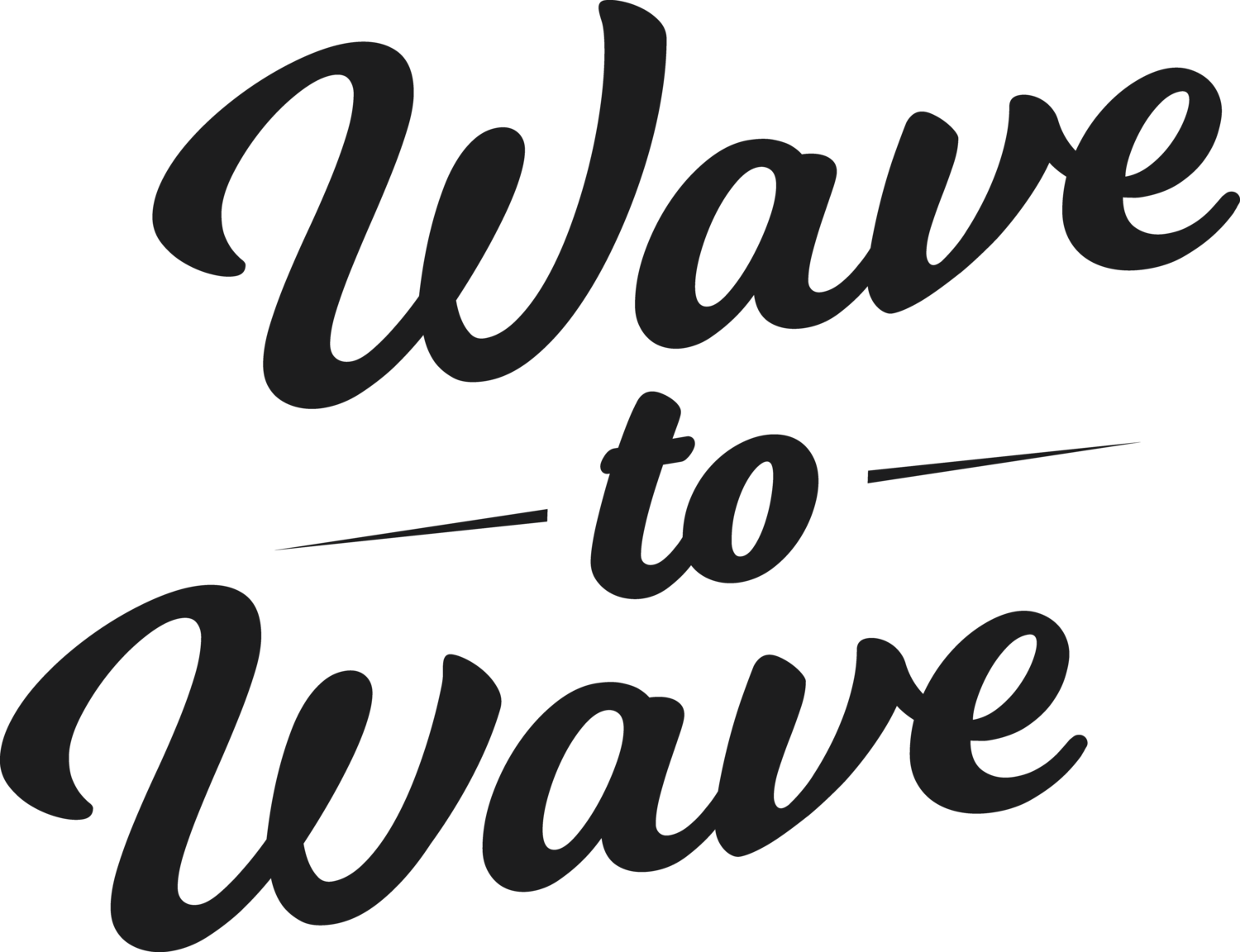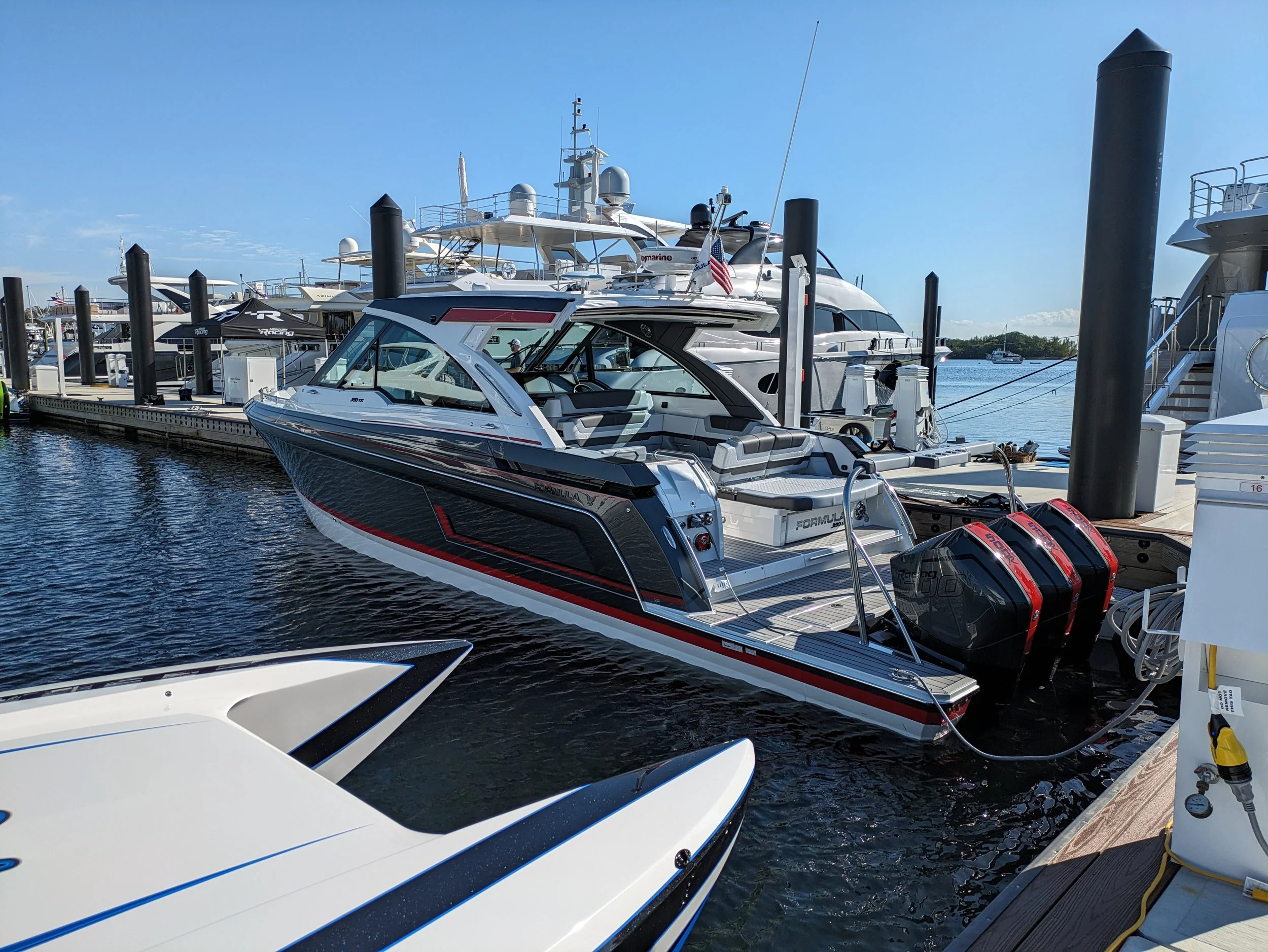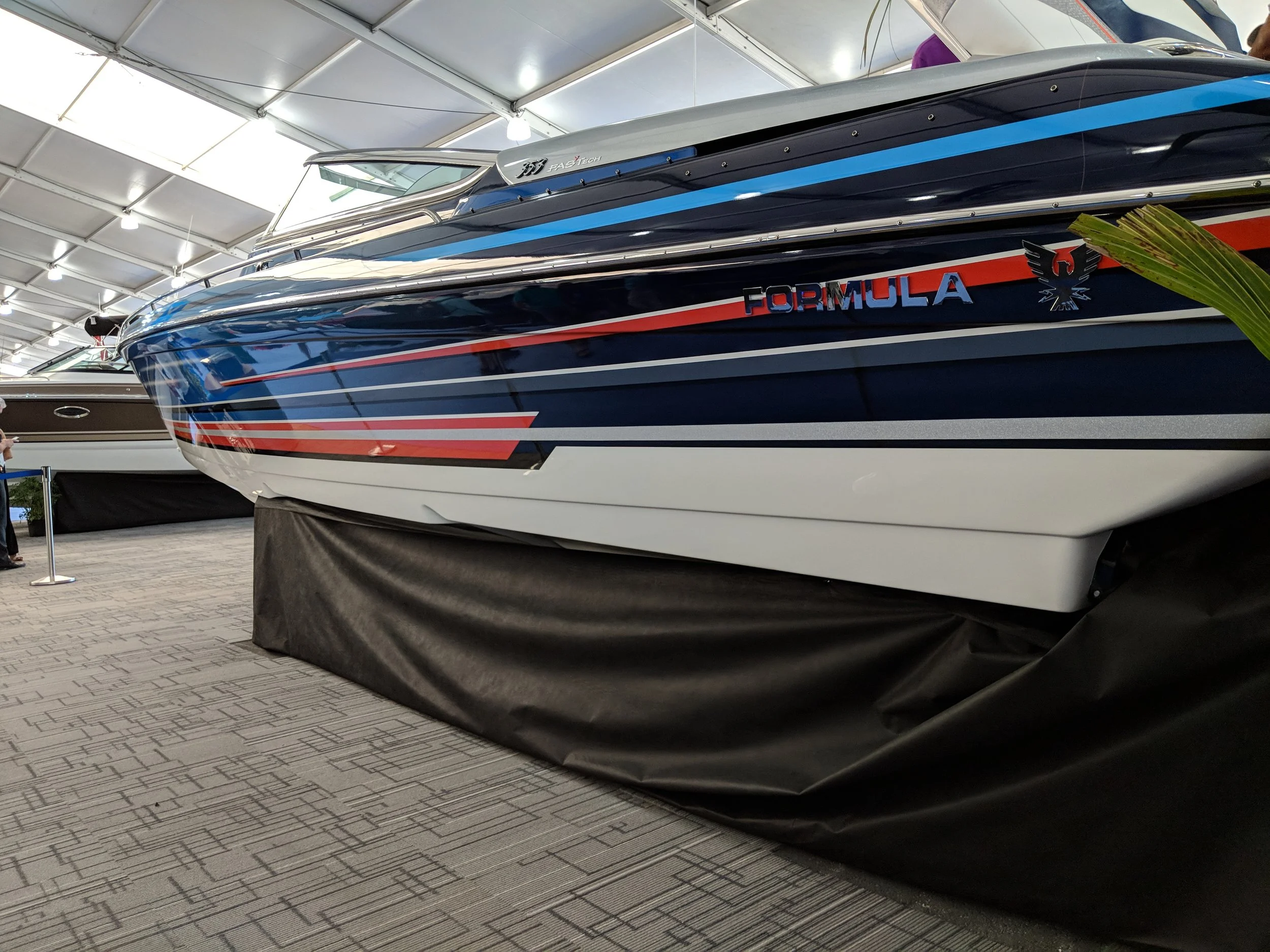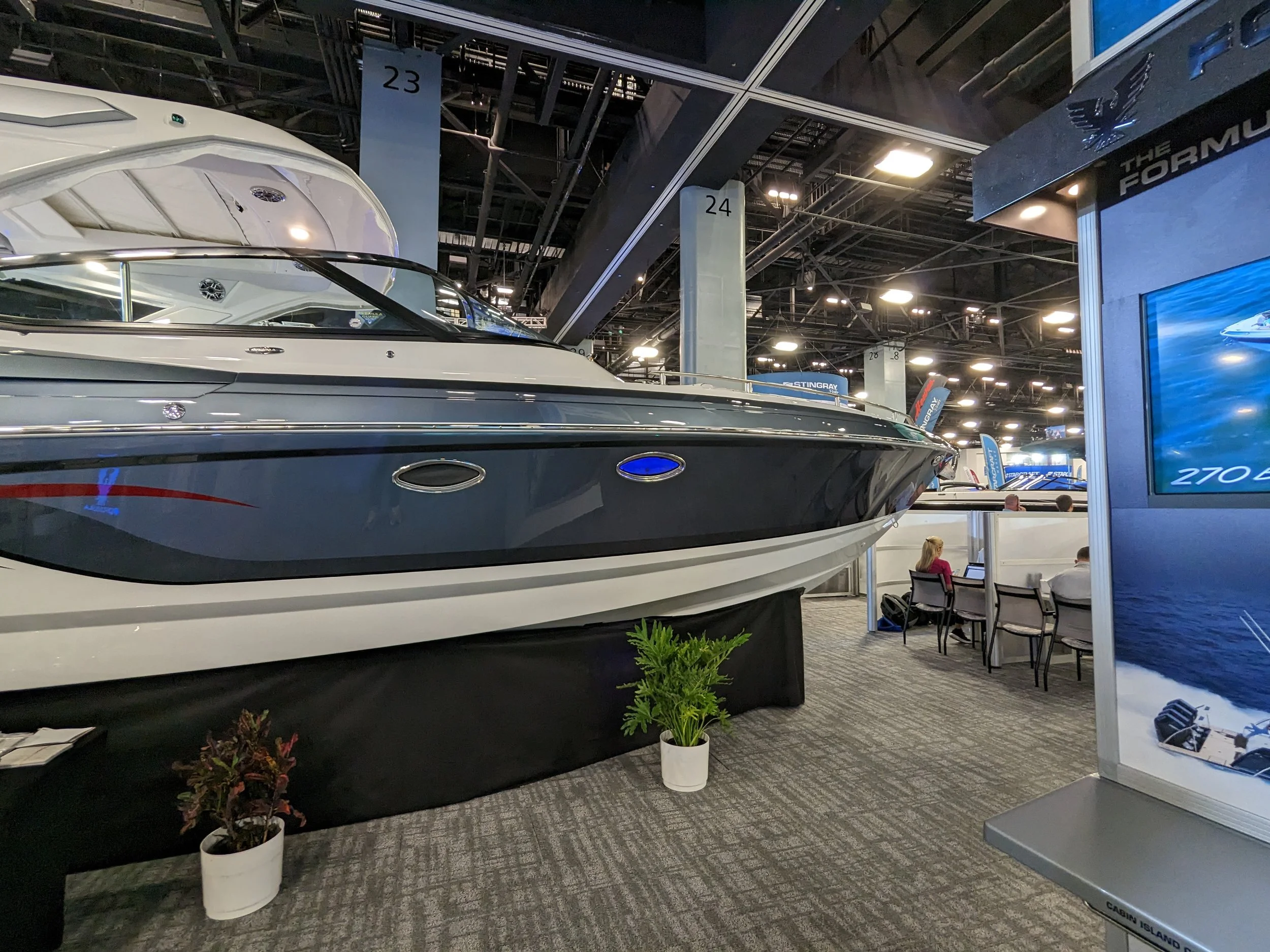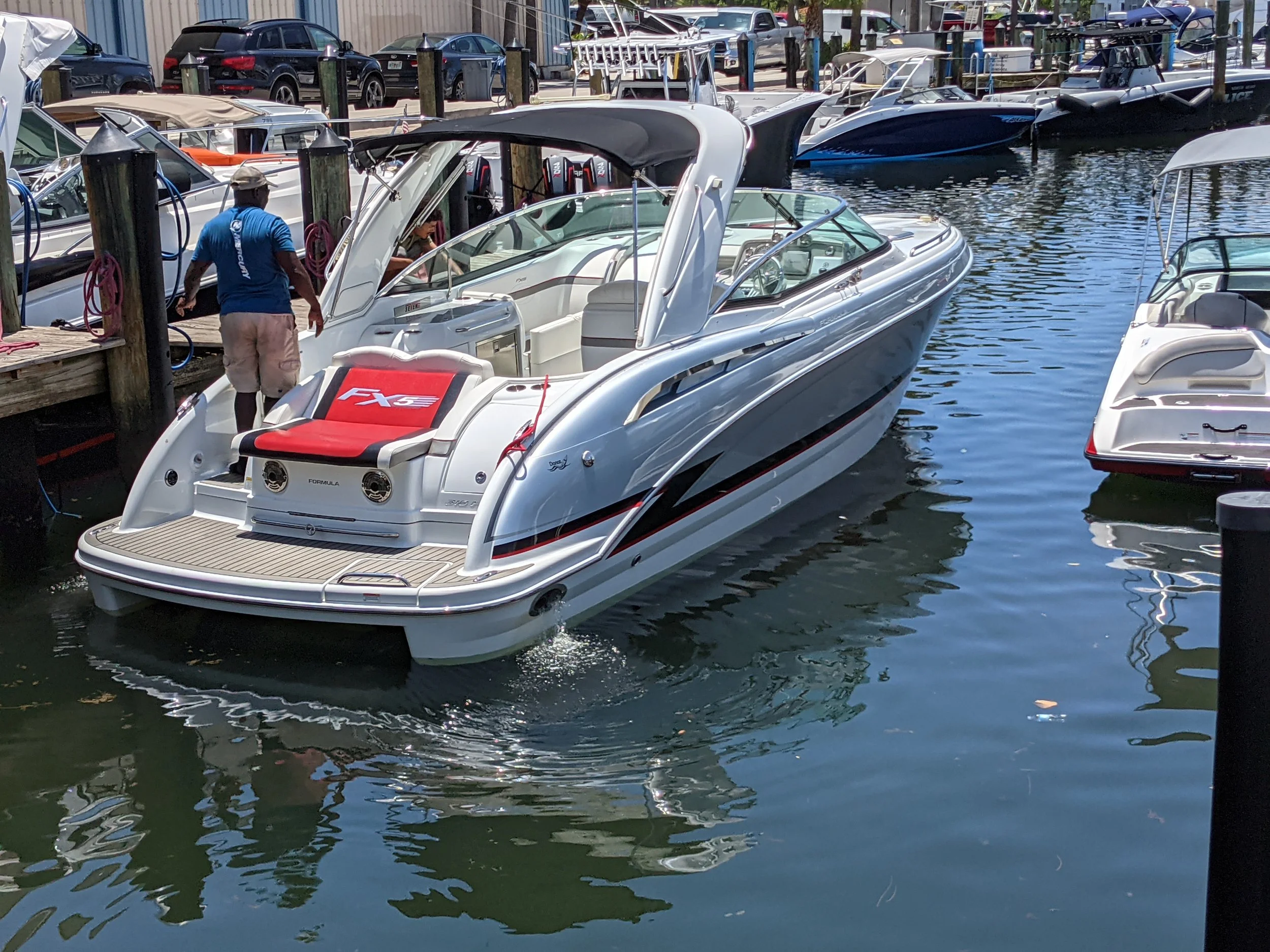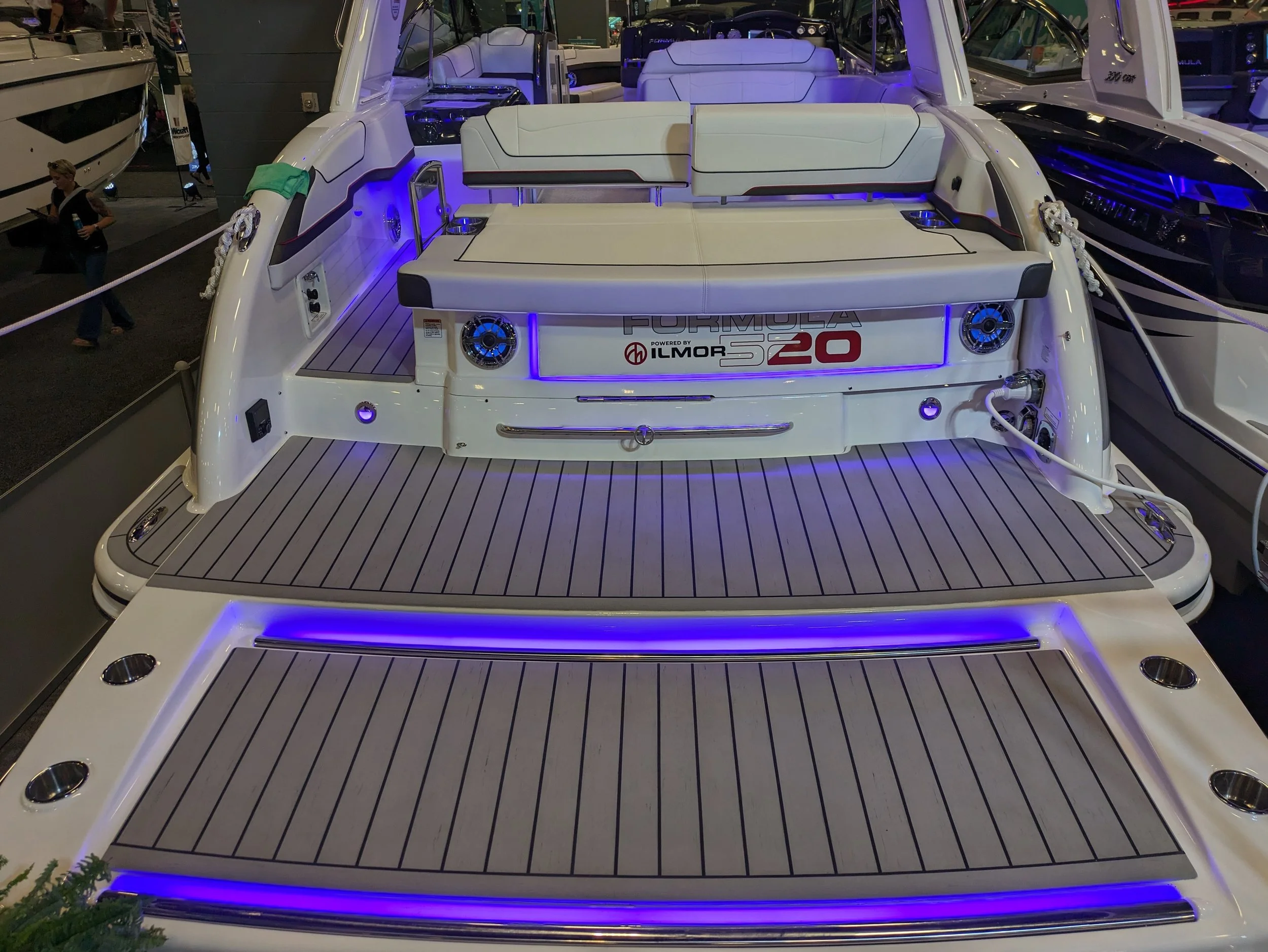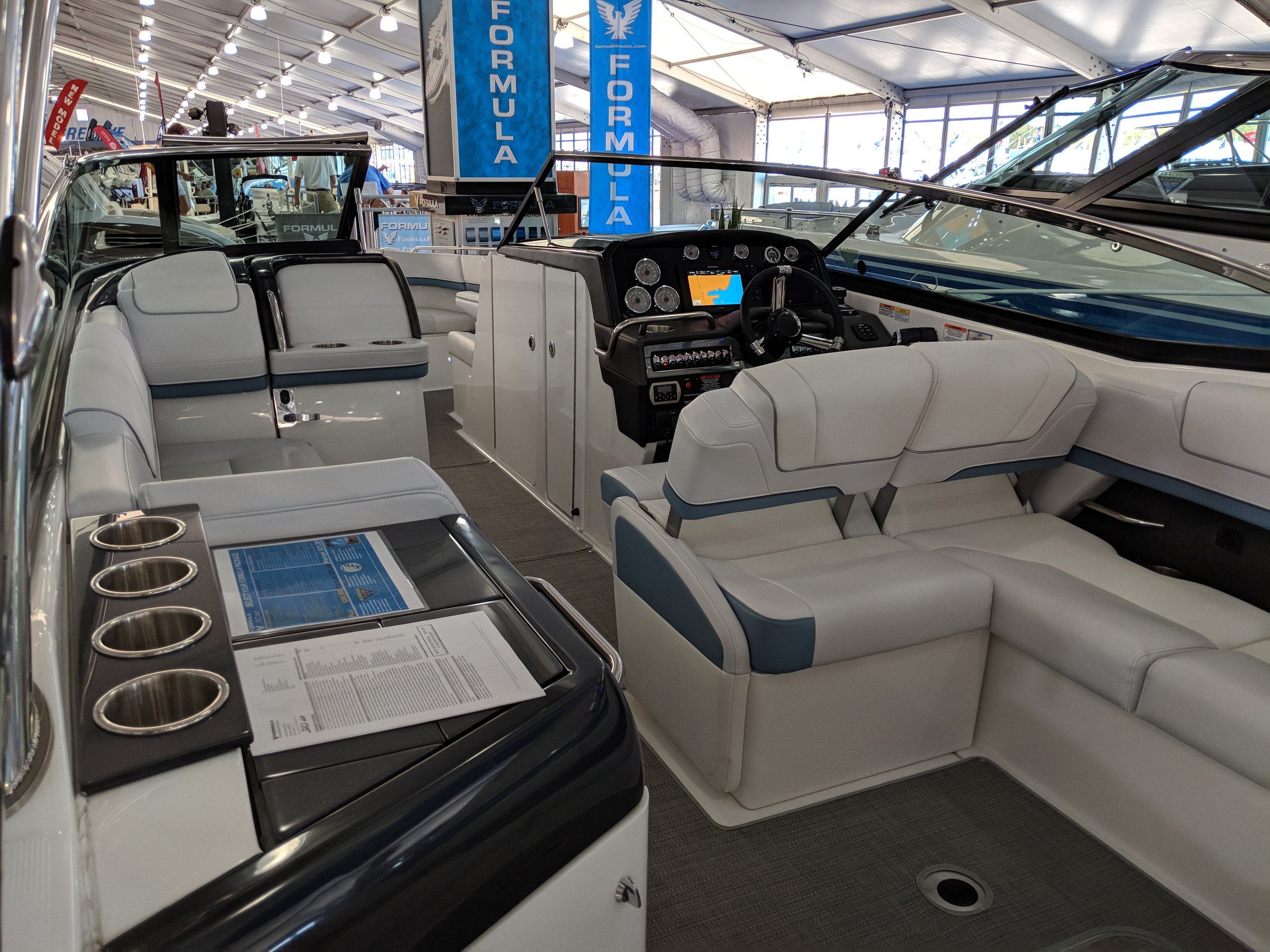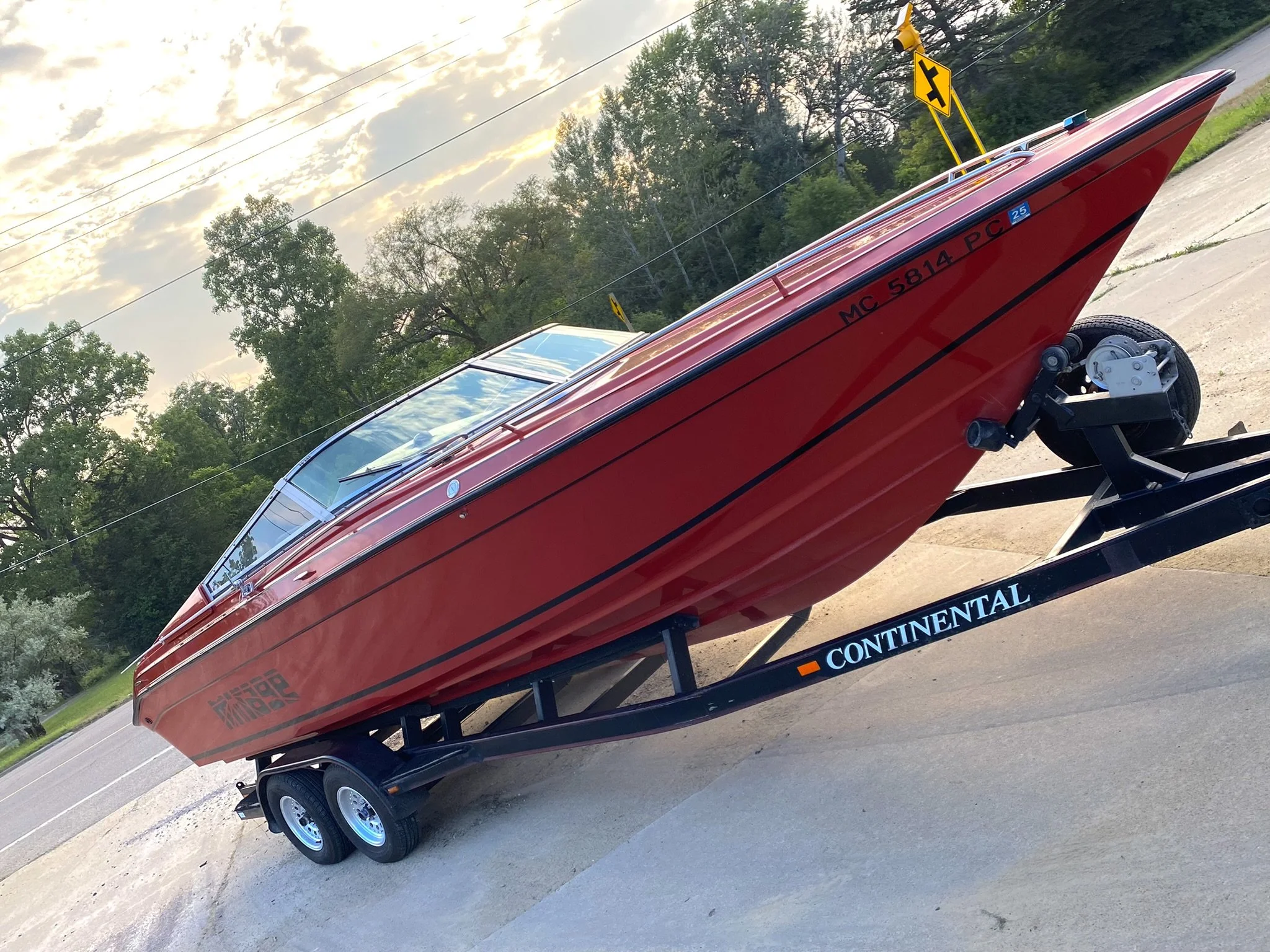For a boat brand that started in Miami by one of performance boating's most notorious entrepreneurs, Don Aronow; Formula Boats has defied family business dynamics and ended up as one of the most successful independent boat companies in America. Family businesses are really hard, the boat business is notoriously hard, and yet Formula Boats has grown into a large family business that keeps refining what they are good at; building well designed luxury boats. From the original fabled 233 born on the infamous Northeast 188th St in Miami, to the massive 500 SuperSport produced at a state of the art facility in Decatur Indiana; Formula reinvented, reshaped and outlasted to become a boat building powerhouse. There are three key drivers to their success, the family ownership, the recognition of their market evolving, and incredible manufacturing prowess.
Long before Formula Thunderbird became the company we know today, Vic Porter had already manufactured boats in the midwest with two different companies. The sale of that company, was a key step in the acquisition of Formula. Although Formula was launched by Don Aronow in Miami in 1962, Don sold it two years later to Alliance Machine. That was Don’s secret to success, among others, was that he was incredible at launching and marketing boat companies, then selling them soon after. Aronow once remarked that you make money selling the company, not making boats; however accurate that is might be unknown but Aronow stuck to that strategy.
Alliance Machine sold the company to Fuqua Industries in 1969, It wasn’t until 1976 that Vic Porter, a very successful entrepreneur from Indiana ended up buying Formula Thunderbird. Alliance had merged Formula with Thunderbird previously, hence the name. Vic had already manufacturing boats under the name Signa, which later sold to Fuqua, and where Porter worked afterward. Eventually, the opportunity for Vic Porter and some investors presented itself, and they bought Formula Thunderbird from Fuqua. Vic brought the operation under one roof in Decatur Indiana, and that roof really grew over time.
This is the 380 Super Sport Crossover, a large cruiser with triple 500R outboards.
The brand was great. Formula had the street cred from Thunder Boat Row and the Aronow Miami connection, and with Vic Porter, it had a really experienced manufacturer leading the way. Like many family businesses, it can be difficult integrating some siblings into a business but Formula seemed to figure that out as the second generation joined the team, Scott Porter is the president as of 1988, Grant is the VP of product development, Wayne is VP of sales and sister Jean is VP of marketing. Their brother John ended up being a doctor. The next generation of Porters has also joined the company. Being in Decatur is probably an advantage to keep siblings and employees sticking around. For a large family with a large business, this kind of success is extremely rare, and it’s a credit to the leadership and the entire team they have built.
Although the FastTech line from 27 to 38 was well received and great looking boats, the decision to get out of performance and focus on the high end luxury market was very wise from a business perspective.
I have met Scott and Grant at various boat shows over the years and they are great people and love talking boats. I even got seated beside Grant at the Mercury Racing 500R launch dinner and got to talk to him quite a bit; he probably still has nightmares about that. In the mid nineties my Dad had a Falcon 2270, a sub brand under Thunderbird at the time, they were cool boats but never quite got the market reach they needed. That year at the Chicago Marine Dealers show in Chicago, my Dad and I talked to Scott quite a bit about the Falcon and he was really interested in our feedback about the boat, and I think this is part of Formula’s success. They have made critical product decisions that were market oriented, not passion oriented.
although outboards are less luxurious to me, and the lines are not as nice on a boat like this, the outboard market is impossible to ignore. Customers want them. The 310 and 350 OB cross over models are very popular.
Everyone loved the SR and FasTech models but Formula dropped the FasTech line in 2019 as sales kept falling and luxury family boats were selling. On top of the luxury family market, the outboard cross over market was growing, and you had the luxury center console market as well. In 2021 Formula launched a flagship Super Sport 500, and the next year got back into center consoles, with the 387. Formula went really big, the boats got even bigger and as much as the brand was founded on offshore performance, business is business and the Porter family did an excellent job pivoting and reimaging the brand over the years. I believe the best selling model overall is the 310, and total production is around 250 boats annually.
This is one of the last FasTech boats made, the line was popular early on, following the SR hulls but interest fell off as the offshore sport market declined after 2008.
Another example of leading the way in manufacturing that Formula has done well is just enough customization with mostly a factory built boat. One issue in boat building is that smaller boat companies can get trapped into becoming ultra custom, where the customer dictates every detail and specification, but that is generally bad for business if you want to scale. The companies that do it, don’t build many boats, maybe 25 to 50 per year max and then you are really stretching. A key example is that Formula adopted using Imron paint in 1982, long before many factory builders started using paint beyond custom jobs, and many still use gelcoat which has pros and cons. But for Formula, the key was the longevity of the finish, ability to repair more easily and the way they could allow customers to pic a color scheme but not a complete custom paint job. There is a program called Formula Flex for custom options on each model.
The Imron paint really stands out for Formula. Paint gives them great color selection, easier repair and longevity.
The Imron relationship is held to this day and the Imron line has expanded dramatically under the Axalta company, which was carved out from DuPont Coatings in 2013; who originally developed the paint as an industrial coating. At that time, DuPont was shifting their business to life sciences and specialty chemicals and away from coatings. The private equity behemoth, Carlyle Investment Management, struck a deal to acquire the coatings business for $4.9 billion, and created Axalta as a stand alone company. After a restructuring and investment in the product side, Axalta went public at the end of 2014. That’s a dramatic investment play, and a great deal for Carlyle, but it was also a great thing for the Imron line as it has become a leader in Industrial, aviation, commercial and marine coatings. Specifically in its polyurethane and advanced urethane coatings.
This is a sporty version of the 310 called the FX5, with captains call, and a few sporty features it is a nice package for the luxury boater wanting a little performance touch.
The glossy finish is something you notice on older Formulas, and you see gloss solid colors and later metallics that live in harsh salt water environments for many years with no fade or oxidation. If there is one defining factor for Formula it is quality. Formula were never the fastest even when they were in the offshore performance market, but the quality and design stood out. In 1984, the new Formula 206 featured a curved glass windshield which was a first among factory built boats. When many offshore boats were flat decks or had molded wind fairings, the SR and FasTech had really practical windshields, which focused on luxury and comfort over speed.
A Formula 350 with an extended swim platform and Ilmor power. Luxury day boats are a staple for Formula.
Scott Porter had raced a Formula 302 SR-1 in B class back in 1985 and he later raced in the popular factory class. Formula won races, they even had Betty Cook run a specialty catamaran class in 1981. Kaama drives were used on some Formulas, but as time went on, the business really became the high end luxury market. Every decade it seemed, Formula would expand the factory, and in 2006 they had added another 85,000 sq. feet to an already large sprawling facility. Consolidation has been key for the company, with everyone operating under one roof, design, sales, marketing, manufacturing; all fostering a culture of collaboration. Formula Boats is the most successful independent boat company that came out of the early sport boat era in the 1960s. Of the Aronow brands that survived, Formula is far and away the most successful. Today the facility is about 500,000 sq ft and is spectacular, that investment is very much a part of the success of the company.
In 2025 the only sport closed bow boat models are the Sun Sport 310 and 350. About 7 years ago you could still get the 240 and 270 in closed bow but now it’s all bowriders. The CBR and Sun Sport hulls are typically a 22 degree with a generous beam, heavy but pretty competent for a luxury boat. For a business like Formula Boats, there is probably a solid case to make legally for having boats that don’t go 70 or 80+ MPH, because that’s a huge liability these days. They really know their customer.
The 310 is one of their most popular models and ranges in price form $360 to just under $500k. Formula is a premium finished premium priced luxury boat. Do some number crunching and you can see what kind of revenue they are generating and it’s impressive.
How the Porters managed such a large family business to succeed with multiple generations working in the company for decades is something for a MBA school case study. And the fact it was done in the precarious world of marine manufacturing is even more impressive. Manufacturing anything is hard, but the marine industry is extremely difficult and subject to all sorts of challenges including volatile supply chains, unpredictable costs, labor intensity and a market especially affected by the greater economy.
Interesting things about the Formula Boats company are that the name came from Don Aronow hiring what he thought was the winning “formula” to building boats, the best designer, builders, rigging etc. With Walt Walters, Jim Wynne and others, the 233 really set the foundation for deep V sport boats and race boats. Allan Brown led sales for Formula through Challenger Marina as a dealer and raced the early boats as well. Brown had remarked at what a success the Formula 233 was and how “Don did everything against the grain of the boat business. He priced the boat double any other 23’ boat, at $7985, cut the dealer discount to point that it was impossible to discount, and put together a ten boat racing team on other people’s money!” (Brown, Powerboat Nation 2016).
I don’t love the trend in multi seating adjustable interiors in modern day boats, but if your goal is to pack people in and everyone has 7 drink holders it’s probably the way to go.
The Jim Wynne designed Win Mill, a 17’ race boat with a 24 degree hull won an endurance race in Europe and was sort of a Formula by the nature of the Aronow Wynne relationship and included in the sale of Formula. But a mold was modified to 16’7” and kept to create the renowned Donzi 16, becoming the hallmark of that brand. The Formula Jr. was later to the market. This was a common practice by Aronow, selling a brand and using that intel and resulting design for the next brand. This is why Don had so many non compete clauses later in his career. The Wynne, Walters, Aronow boats definitely have a signature look. Not to mention the boat industry is notoriously a copycat industry.
As colorful as the past is for Formula Boats, the future is bright. With 3rd generation siblings working up the ladder and bigger and bigger models, the company is poised to keep going. Their ability to see the market and know their customer has helped them immensely. With captivating designs from the long tenured designer John Adams, who Scott knew before the acquisition and was at the Miami location originally; the Formula look is unique and quintessential to luxury on the water. Now, the latest model designed by Michael Young, the 360 CBR, looks poised to carry that ethos forward.
The new Formula 360: photo from Formula Boats. The latest design from the new designer for the brand, Michael Young
Whatever happens to the luxury sport boat market in the future, I would expect Formula to be part of it. It looks like Vic Porter did have the winning Formula after all. The Porter family and the entire team in Indiana should be exceptionally proud of what they have accomplished. Almost any business comes down to the people at every level, and Formula is no exception. The company isn’t a marine success story, it’s an American business success story.
Sources:
“The King of Thunderboat Row” Michael Aronow
“Tales of Thunderboat Row” Allan Brown 2018
“Brownie’s Bites: Don Aronow, The Early Years (Before He Became a God)” Powerboat Nation, Brown 2016
“Launching Axalta: An interview with Charlie Shaver” Mckinsey, Richard Elder
https://www.mckinsey.com/industries/chemicals/our-insights/launching-axalta-an-interview-with-charlie-shaver
https://www.formulaboats.com/about/history/
If you have a few IPO’s under your belt, 3 personal assistants, and been on the cover of Forbes a few times; this is the perfect boat to get on the water a couple times a year at your winter home in Naples.
